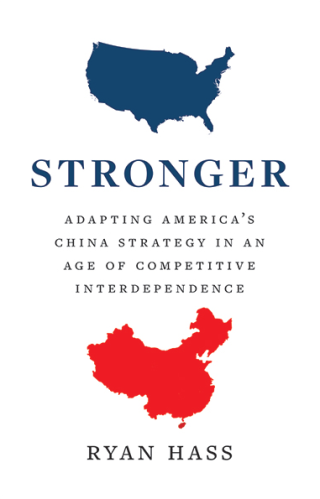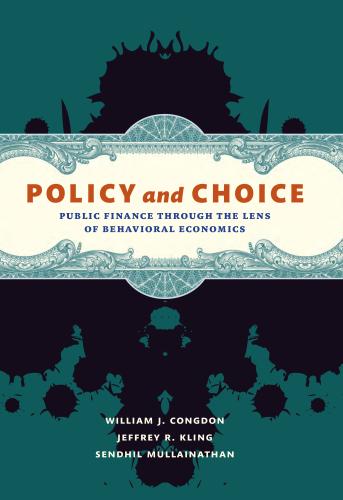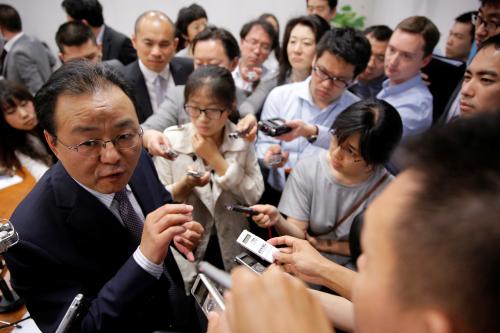Robert D. Williams examines what the U.S. accomplished through its recent South China Sea legal statement, and argues that if the United States is unwilling to back up its commitment to Southeast Asian countries with tangible new measures, it risks further alienating officials in the region who already worry that the United States is an unreliable strategic partner. This piece originally appeared in Lawfare.
On July 13, Secretary of State Mike Pompeo issued a statement outlining the “U.S. Position on Maritime Claims in the South China Sea.” The statement coincides with the fourth anniversary of a landmark decision by an international arbitration tribunal vindicating claims brought by the Philippines against China under the U.N. Convention on the Law of the Sea (UNCLOS), and Pompeo’s announcement explicitly aligns the United States with the UNCLOS tribunal’s ruling, declaring that China’s expansive claims to offshore resources across most of the South China Sea are “completely unlawful.”
The day after Pompeo’s statement, Assistant Secretary of State for East Asian and Pacific Affairs David Stilwell delivered a speech setting forth a bill of particulars concerning Chinese misdeeds in the South China Sea and beyond. Stilwell argued that China seeks to “replace international law with rule by threats and coercion.”
Some observers might dismiss these statements as part of a broader Trump administration effort to demonstrate its “tough on China” credentials in the run-up to the 2020 presidential election. As diplomatic-legal communications, however, the statements warrant a closer look—as much for what they don’t do as for what they do.
Neither document substantively changes the United States’s position regarding China’s expansive South China Sea maritime claims and the inconsistency of these claims with international law—including China’s notoriously ambiguous nine-dash line covering nearly 80 percent of the South China Sea. China has never clarified whether the nine-dash line represents a claim to the land features within the line and their adjacent waters, a boundary of national sovereignty over all the enclosed waters, or a claim of some other set of “historic rights” to the maritime space within the line.
To be sure, Pompeo’s statement is the first instance in which the U.S. government has publicly endorsed the merits of the 2016 UNCLOS tribunal decision on the status of certain features in the Spratly Islands and related maritime entitlements (a decision that did not address underlying sovereignty claims). But the State Department has previously acknowledged the legitimacy of the UNCLOS tribunal’s decision, issuing a statement in July 2016 recognizing the decision as “final and legally binding on both China and the Philippines.” The State Department also published a white paper in 2014 setting forth a detailed analysis of China’s nine-dash line claim and the limited conditions under which it could plausibly cohere with the international law of the sea as codified in UNCLOS.
So what exactly did the United States accomplish with its latest pronouncements?
First, consider the broader geopolitical context for the statements. U.S.-China relations are deteriorating rapidly on nearly every front, from accountability for the coronavirus pandemic and tensions over telecommunications firm Huawei to human rights atrocities in Xinjiang and a new national security law for Hong Kong. Meanwhile, concerns have been raised that Beijing is exploiting a window of opportunity during the pandemic to expand its position in the South China Sea and near abroad. These worries have been fueled by reports regarding China’s sinking of a Vietnamese fishing vessel in March, a standoff between a Chinese survey ship and a Malaysian oil exploration vessel in April and May, Beijing’s March announcement of new research stations on disputed reefs, and its April declaration establishing new administrative districts in the region.
Against this backdrop, the Trump administration may have perceived a need to “do something” to respond to China’s latest South China Sea moves by demonstrating resolve, showing support for Southeast Asian allies and partners frustrated by Chinese bullying, and highlighting for the world the hypocrisy in China’s self-portrayal as a benevolent, law-abiding citizen in its region. Amid intensifying U.S.-China geopolitical competition in the Indo-Pacific, calling out Chinese mischief is one way for the U.S. to seek favor with countries eager to push back on China’s assertiveness. Fair enough.
Setting aside these largely rhetorical objectives, however, what are the practical implications of the State Department’s pronouncement?
The United States has been carrying out regular naval operations in the South China Sea to assert navigational rights and freedoms in the contested waters, without prejudice to sovereignty disputes. In recent weeks, the U.S. Navy sent two aircraft carrier strike groups to conduct exercises in parallel to China’s own drills, and held another round of dual-carrier exercises this week. The Pompeo and Stilwell statements do nothing to change the basic framework undergirding the U.S. assertion of these prerogatives under international law.
But do the statements nonetheless suggest that the United States is prepared to add muscle to its support for regional partners who find themselves on the losing end of Chinese lawfare? According to Pompeo’s statement, “America stands with our Southeast Asian allies and partners in protecting their sovereign rights to offshore resources … and [we] reject any push to impose ‘might makes right’ in the South China Sea or the wider region.”
One possibility is that this declaration could presage sanctions against Chinese companies involved in supporting China’s island building, its positioning of military assets on disputed features, or other unlawful activities. Indeed, Stilwell suggested as much in response to a question following his speech, noting that “there is room for [sanctions]” and that “nothing is off the table.” Even so, it is unclear that the U.S. statement on the legality of China’s activities adds anything meaningful to a sanctions decision. The statement does not, for example, create an independent basis for sanctions under U.S. law, which would presumably be authorized pursuant to a presidential declaration of an “unusual and extraordinary threat” to U.S. national security under the International Emergency Economic Powers Act.
Perhaps the reference to “protecting [the] sovereign rights to offshore resources” of America’s Southeast Asian allies and partners suggests the U.S. is prepared to defend coastal states’ rights to fish and drill in waters to which China has no rightful jurisdiction. In this regard, it is noteworthy that at least one U.S. company, ExxonMobil, is engaged in a joint project with PetroVietnam that in 2011 led to the discovery of significant natural gas deposits in Vietnam’s Block 118. The Ca Voi Xanh gas field lies about 50 miles off Vietnam’s coast but intersects the enormous area within China’s nine-dash line claim. With the corporate partners’ decision on whether to proceed with the $10 billion venture expected later this year, one could imagine that the United States might intervene to protect the project from Chinese interference. But such a decision would be laden with risks of sparking a confrontation that benefits neither Vietnam nor the United States. And nothing about such a decision requires the United States to explicitly adopt the reasoning of the 2016 UNCLOS tribunal.
This brings us to the question of what can be expected from the Pompeo and Stilwell remarks. If the United States is unwilling to back up its commitment to Southeast Asian countries with tangible new measures, it risks further alienating officials in the region who already worry that the United States is an unreliable strategic partner. Washington also confronts the twin risks of provoking Chinese retaliation or revealing itself as a paper tiger, possibly further emboldening China in its regional expansionism. Many in Beijing already perceive the United States to be engaged in a full-fledged effort to thwart China’s rise. Others in the Chinese leadership may see opportunity as a faltering America reels from the pandemic and disengages from the international system. Whether owing to a perception of U.S. weakness or to a felt need to respond to U.S. provocations with a show of strength, there is a risk that China could take even more destabilizing steps—perhaps, for example, crossing the “red line” that President Obama drew around Chinese land reclamation at Scarborough Shoal in March 2016.
Judging from the Chinese Foreign Ministry’s relatively measured initial reaction to the Pompeo and Stilwell statements, it seems unlikely that China will respond in the near term with aggressive action that might provoke a military conflict. A more realistic, if equally troubling, possibility is that an accident involving vessels or aircraft operating in proximity in the South China Sea could spark an escalation spiral that evolves into a military conflict neither side wants. The risk of miscalculation is inherent in the nature of ongoing military interactions in the region, and one the latest U.S. pronouncements probably do little to alleviate.
In short, the secretary of state’s statement of the “U.S. Position on Maritime Claims in the South China Sea” made headlines and is likely to ruffle feathers in Beijing, but it is not clear how it advances U.S. interests in practical terms.
Importantly, even if the main purpose of the statement is rhetorical, any diplomatic point-scoring must be discounted by the statement’s potential costs to America’s credibility as underwriter of the international legal order. Among other things, the State Department’s express alignment in the statement with the substantive ruling of the 2016 UNCLOS tribunal underscores the inconvenient fact that the United States itself has not ratified UNCLOS. As such, even though the U.S. government treats most of UNCLOS as customary international law, the United States could not be taken to international arbitration (as the Philippines did to China) over disputes regarding Washington’s own maritime claims.
This is particularly relevant in the context of the 2016 tribunal decision, which ruled that none of the disputed features in the Spratlys are “islands” entitled to a 200-nautical mile exclusive economic zone (EEZ) in addition to a 12-nautical-mile territorial sea. The United States asserts EEZs and attendant jurisdictional rights around numerous remote Pacific features that likely would not satisfy the tribunal’s narrow rationale for what constitutes an island entitled to an EEZ. Thus it is not clear why the United States would adopt the tribunal’s legal rationale as its own instead of hewing to the position—fully consistent with international law—that the tribunal ruling is legally binding on the parties to the arbitration, namely China and the Philippines. The U.S. can demonstrate its position on specific maritime claims in the South China Sea through freedom-of-navigation operations, diplomatic demarches and other routine operations exercising navigational freedoms, without a need for the kind of sweeping proclamation issued by Pompeo.
Again, these downsides must be weighed against the utility of bolstering rhetorical support for Southeast Asian countries such as Vietnam, Indonesia and Malaysia, which are seeking to advance their legal claims in opposition to China and are negotiating a Code of Conduct that they hope will constrain Chinese coercion in the region. Legal statements like Pompeo’s also implicitly recognize that China cares about the legitimacy benefits conferred by law, including international law: Beijing has devoted considerable energy toward portraying itself as a “staunch defender and builder of international rule of law.” As such, an emphatic U.S. challenge to the legal legitimacy of China’s position arguably imposes costs that will affect reputation-sensitive calculations in Beijing. As noted above, however, exactly how it will affect those calculations remains an open question.
To query the value of the State Department’s South China Sea legal statement is not to imply that China is blameless. On the contrary, China’s bullying and expansionism in the South China Sea deserve international condemnation and sustained American attention. But if the net result of the State Department’s new “position” is to weaken U.S. leadership in Asia—whether by highlighting Washington’s reluctance to follow through on rhetorical commitments to partner countries, or by showcasing inconsistencies in the U.S. approach to the international law of the sea—this would be a boon to a Chinese leadership eager to deflect attention from its own transgressions.
The Brookings Institution is committed to quality, independence, and impact.
We are supported by a diverse array of funders. In line with our values and policies, each Brookings publication represents the sole views of its author(s).











Commentary
What did the US accomplish with its South China Sea legal statement?
July 22, 2020